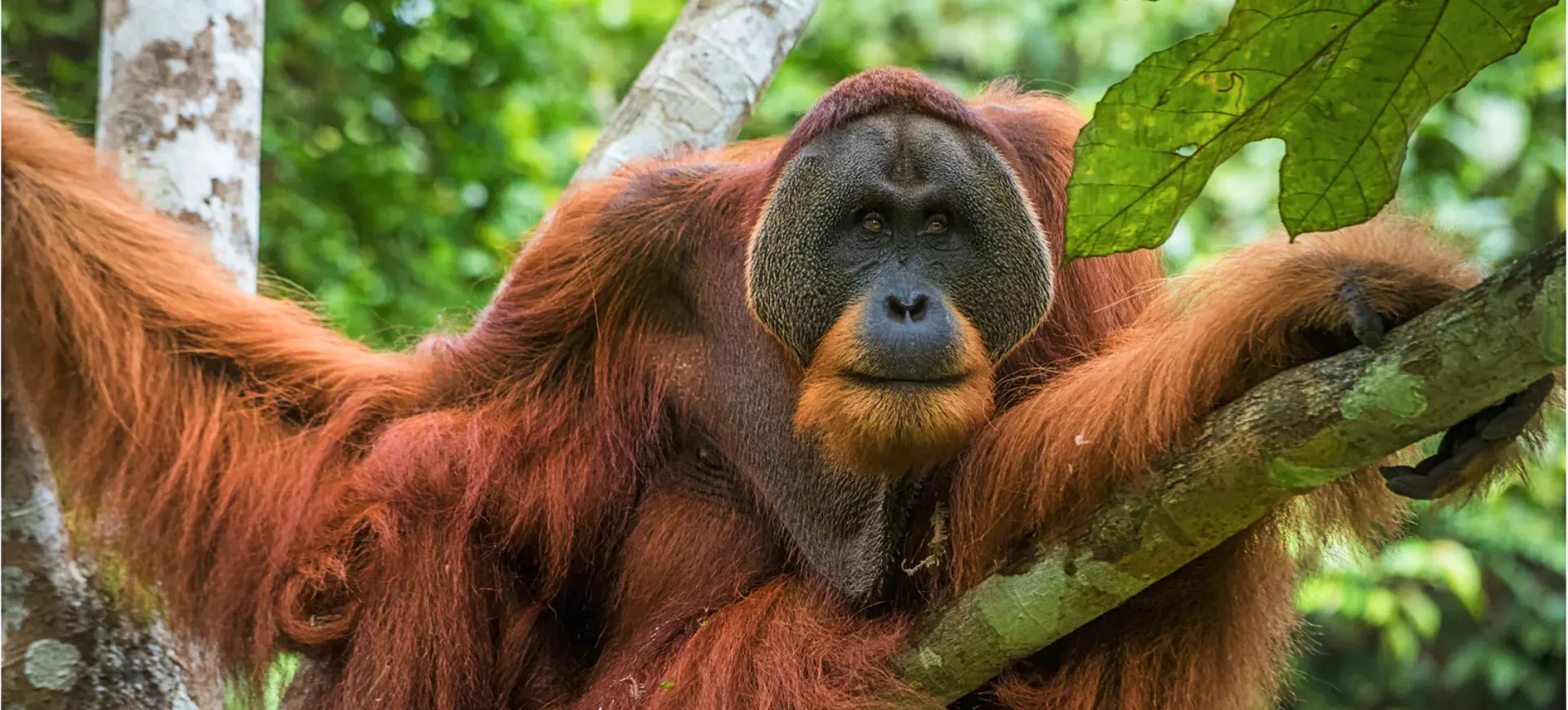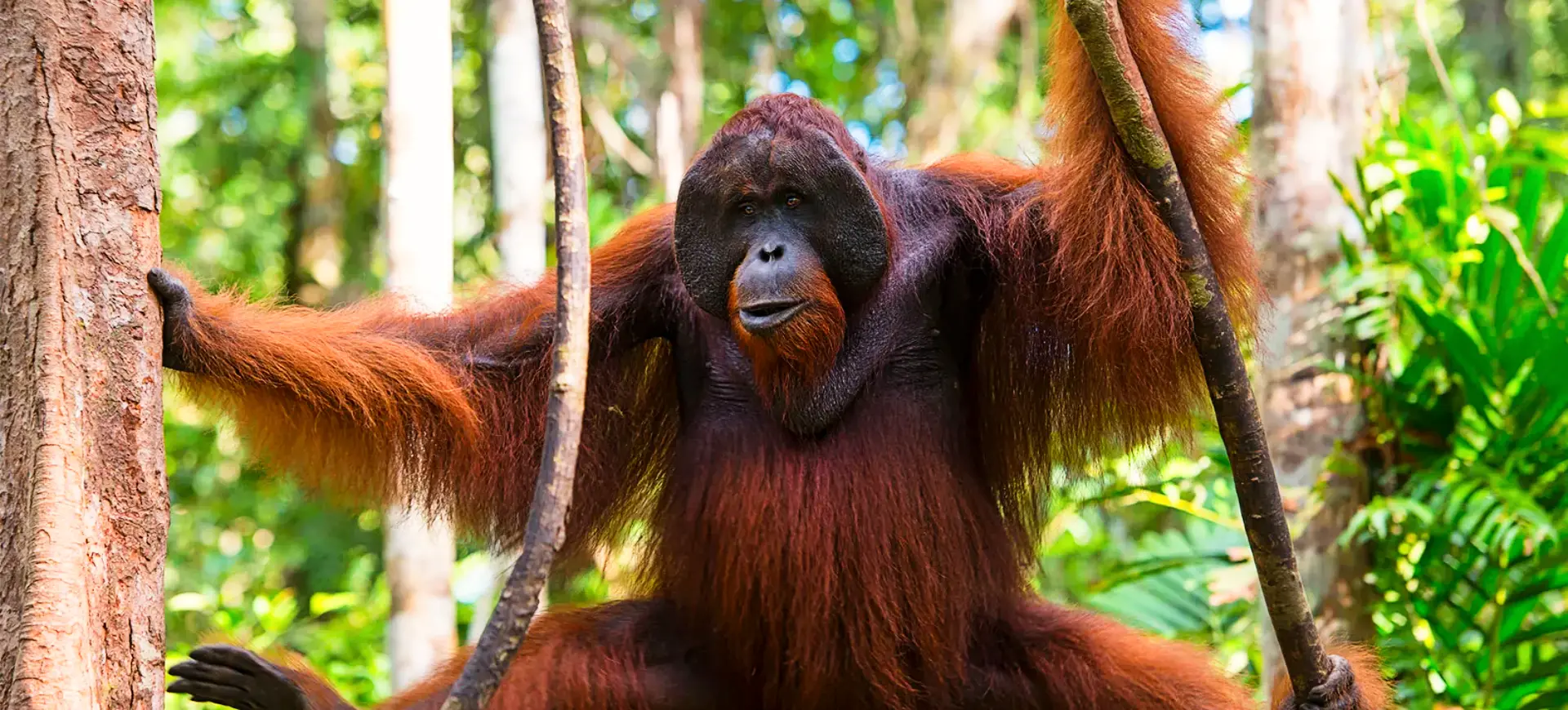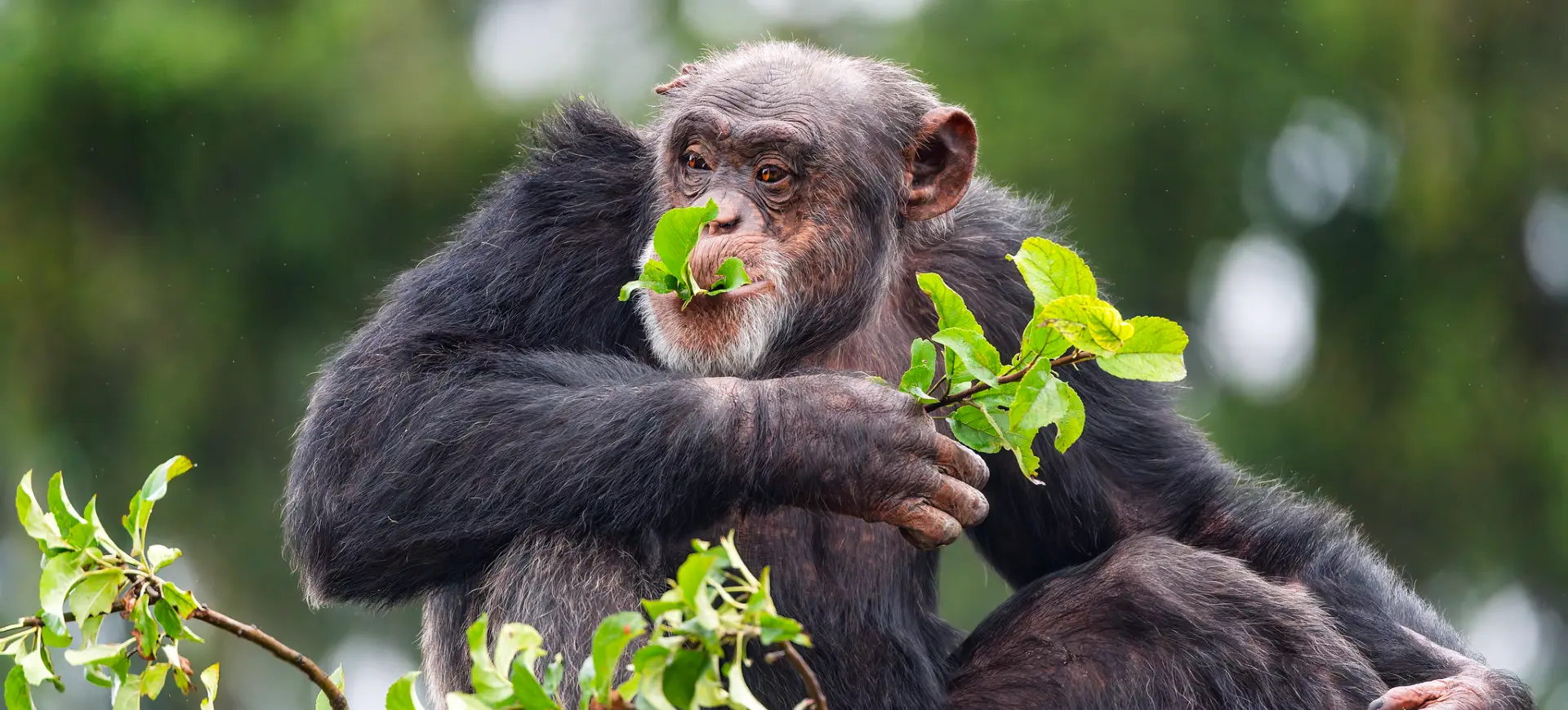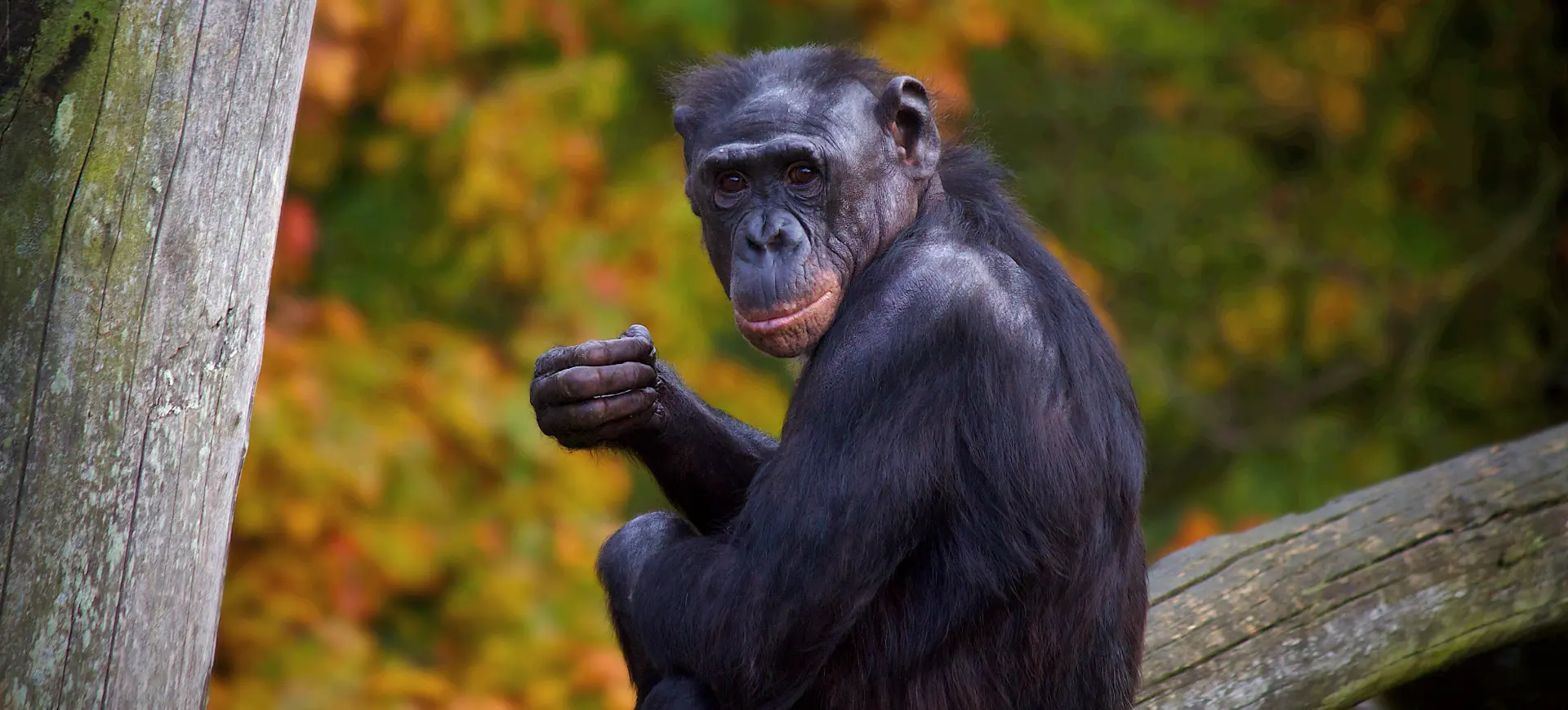Overview
The Western lowland gorilla (Gorilla gorilla gorilla), a subspecies of gorilla, resides in central Africa’s dense rainforests and lowland swamps. This species is the smallest of gorillas, with males standing about 1.7 meters tall and weighing between 140 and 200 kilograms, while females, being smaller, reach around 1.5 meters in height and weigh between 60 and 100 kilograms. The gorillas’ distinguishing features include a prominent brow ridge and an overarching forehead, lending them a rugged appearance. Their fur exhibits an earthy brown hue, providing effective camouflage in their forest habitats.
These creatures are renowned for their intricate social structures. They live in groups known as troops, usually made up of one dominant male, a silverback, multiple females, and their offspring. Communication among troop members is multifaceted, encompassing various vocalizations, body postures, and facial expressions. The Western lowland gorilla’s diet is predominantly vegetarian, incorporating fruits, leaves, and stems, though they occasionally consume small invertebrates.
Interestingly, these animals are our closest relatives, sharing over 98% of our genetic makeup. Their intelligence level is apparent in the wild, where they have been seen utilizing tools. Despite their formidable size and strength, these gorillas are generally gentle and shy unless they sense danger. Unfortunately, their survival is threatened by habitat loss and poaching, making their status critically endangered. This underlines the pressing need for robust conservation efforts to ensure their survival.
Physical Description:
Western Lowland Gorillas are characterized by their robust build and formidable strength. They lack a tail but feature a wide chest and muscular shoulders, supporting a large head with a prominent brow ridge and small eyes. This primate’s elongated arms exceed the length of their short, robust legs, facilitating their distinctive mode of locomotion.
Both male and female gorillas share a coat of brownish-grey fur, offering them effective camouflage in their natural habitats. A unique aspect of adult males is the patch of silver-grey fur that graces their backs upon reaching maturity. This distinctive feature has earned mature males the moniker ‘silverbacks,’ highlighting their status within gorilla communities.

Lifespan: Wild: 30-40 years || Captivity: ~50 years

Weight: Male: 300-400 lbs (136-181 kg) || Female: 150-200 lbs (68-91 kg)

Length: Male: 31-63 inches (78-160 cm) || Female: 31-59 inches (78-150 cm)

Height: Male: 66 inches (168 cm) || Female: 60 inches (152 cm)

Top Speed: 20 mph (32 km/h)
Characteristic:
Native Habitat:
Western Lowland Gorillas inhabit the dense and remote rainforests of central and west Africa, where they prefer secondary forests and forest edges but can also be found in primary forests, swamp forests, and savannas. These habitats provide the gorillas with plenty of food resources and ample cover for protection.
These gorillas live in groups called troops, which move within a home range of 3 to 45 square kilometers. Troops’ ranges often overlap, but conflict is usually avoided through vocalizations, displays, and retreats. The specific habitats of the troops can vary based on food availability and human activities.
Climate Zones:
Biomes:
WWF Biomes:
Biogeographical Realms:
Continents:
Countries:
Diet:
Diet & Feeding Habits:
The diet of the Western Lowland Gorilla is diverse and largely herbivorous, composed of fruits, leaves, stems, bark, and vines from more than 100 different plant species. While primarily vegetarians, they have been known to consume small insects and grubs, providing a source of protein. Western Lowland Gorillas also consume rotting wood and bark for the nutritional benefits of the fungi and invertebrates found within.
Fruit makes up a significant portion of their diet, and the seasonal availability of these resources often dictates their foraging activities. A troop will travel through its home range for food, led by the dominant silverback. The silverback also oversees the feeding, ensuring every troop member gets enough food.
Mating Description:
The dominant silverback usually monopolizes the breeding within the troop. Mating can occur anytime but is most common during the rainy season. There is no set breeding season for Western Lowland Gorillas; instead, females come into estrus approximately every month, similar to humans.
Females signal their readiness to mate through behavioral changes and specific vocalizations. The gestation period is approximately 8.5 months, with the mother typically giving birth to a single offspring. Twin births are rare but do occur. Offspring are helpless at birth, relying completely on their mother for care and transportation.
Reproduction Season:
Birth Type:
Pregnancy Duration:
Female Name:
Male Name:
Baby Name:
Social Structure Description:
The Western Lowland Gorillas are known for their highly structured social groups, often called troops. A typical troop consists of one dominant adult male, often called a silverback due to the characteristic patch of silver hair on its back, several adult females, and their offspring. The troop size varies, usually ranging between 5 to 20 individuals—this polygynous structure, where one male mates with multiple females, is central to gorilla social organization.
The Silverback, being the group’s alpha male, has numerous roles. He makes crucial decisions for the troop, such as determining the group’s movements and feeding times. He mediates conflicts within the group, and most importantly, he protects the group from external threats. On the other hand, females share a strong bond, engage in social grooming, and collectively care for the young. Young males, often called blackbacks, may remain with the group until mature enough to challenge other silverbacks and establish their troops. Despite the occasional conflict, these social structures showcase a peaceful and cooperative society.
Groups:
Conservation Status:
Population Trend:
The wild population of Western Lowland Gorillas faces severe threats, leading to a significant reduction in their numbers. Primarily, habitat loss, the spread of diseases such as Ebola, and persistent poaching activities have contributed to their decline. The precise count of this gorilla subspecies in the wild remains uncertain, with rough estimates ranging between 100,000 to over 300,000 individuals.
Even though Western Lowland Gorillas constitute the most populous gorilla subspecies, their population trend is unfortunately on the downturn. These challenges underline the urgency for strengthened conservation efforts to ensure the survival of this critically endangered primate.
Population Threats:
Western Lowland Gorillas face numerous threats, with habitat destruction being a primary concern. Logging operations and the expansion of agricultural activities lead to significant loss of their natural habitats, pushing these primates further towards the brink of extinction.
Additionally, poaching for the bushmeat trade presents a critical challenge to the survival of these gorillas. They are also susceptible to diseases, notably the deadly Ebola virus, which can cause catastrophic losses in their population. These threats highlight the urgent need for ongoing and increased conservation efforts.
Conservation Efforts:
Conservation strategies for protecting Western Lowland Gorillas primarily focus on habitat preservation and robust anti-poaching enforcement. These efforts aim to curb the devastating effects of human activities on their natural environments and secure safe habitats for these great apes.
Several organizations, such as the World Wildlife Fund (WWF), are heavily involved in these conservation initiatives. They collaborate with local communities and governments to designate protected regions and foster sustainable practices. This approach balances human needs with the imperative to preserve the gorilla’s habitats and ensure survival.
Additional Resources:
Fun Facts
- Despite being the smallest of the four gorilla subspecies, a male Western Lowland Gorilla can weigh up to 400 pounds.
- Western Lowland Gorillas have unique noseprints, much like human fingerprints, which can be used to identify individual gorillas.
- They have been known to use tools in the wild, demonstrating problem-solving skills and advanced levels of cognition.
- A typical Western Lowland Gorilla diet includes over 200 different types of plants and a few insect species.
- The dominant males, or silverbacks, have a patch of silver-colored hair on their backs and hips, distinguishing them from the females and younger males.
- In the gorilla social structure, the silverback makes all the decisions, like determining the group’s movements, mediating conflicts, and protecting the group from predators.
- Female Western Lowland, Gorillas give birth only once every four to six years, contributing to their slow population growth.
- Western Lowland Gorillas communicate with each other using a complex system of vocalizations, body postures, and facial expressions.
- They are very friendly and spend much of their waking hours grooming each other to strengthen and maintain social bonds.
- Contrary to popular belief, Western Lowland Gorillas are not aggressive creatures. They are generally calm and non-aggressive unless they are threatened.







